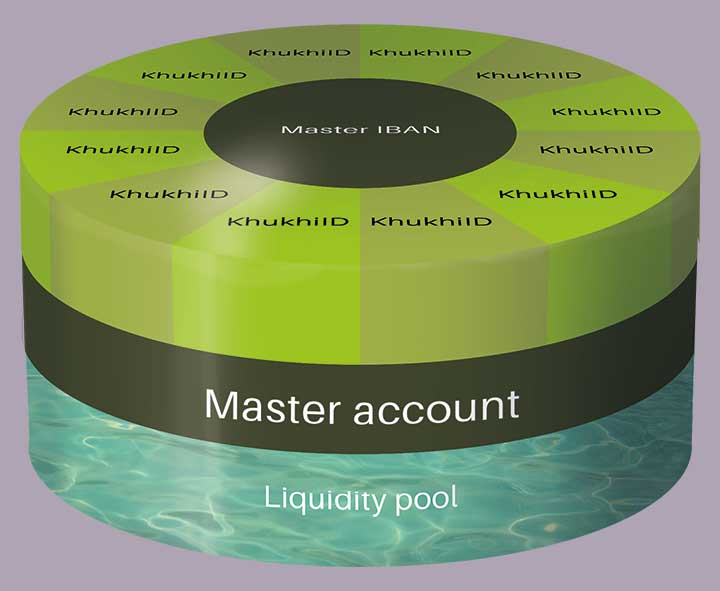Virtual and transparent
It's all good
Virtual accounts are an attractive proposition for flexibility, ease of reconciliation and instant payments. So why do so many banks distrust them? Here we'll look at the pros of virtual accounts, and then explore how to remove the cons.
And we'll show you how you can offer your customers their own named accounts to access super-fast payments and low cost, all in a structure that makes your business significantly more appealing to global banking partners.
The essential ingredients
As you'll see on other pages of this website, identity is the core element of the way we do things. That touches closely on a fundamental shortcoming of traditional virtual accounts, making their acceptance by many financial organisations a severe limit to their use.
Where's the account?
Messaging systems like SWIFT provide a designated field for the IBAN of the receiving organisation. It's intended to provide a routing instruction, but it also allows counterparties to check the identity of the business. A virtual account has its own IBAN, which replaces that of the master account holder. A vital component of transparency is therefore lost.
We strongly believe that the master account should always be visible, so our virtual account structure was designed around this consideration.
Repurposing eKeyiD
The reluctance of many of the major financial institutions to accept virtual account transactions is understandable, but it prevents the many advantages of the structure. We looked for a way to create a model that would satisfy their objections.
We're strong exponents of the CertiQi eKeyiD platform to provide instant transparency in business. We're also strong advocates of virtual accounts, and we saw a way to connect the two by working with CertiQi on a variant of the eKeyiD concept to create a different form of account identifier - the KhukhiID.
The KhukhiID
Our custom eKeyiD is a 25-character code that identifies virtual account of the beneficiary or originator of a transaction. It can't be mistaken for an IBAN, and occupies a different area of a financial message. In SWIFT, for example, Field 59 of an MT103 message should contain the IBAN of the master receiving account. This remains in place, rather than being replaced by a vIBAN. Meanwhile, the KhukhiID resides in one line of the Field 70 payment details. The receiving organisation uses it to instantly route the payment to the correct virtual account.
Nested identity
An eKeyiD may identify a transaction. That key can contain the keys to identify the involved companies, which can in turn contain the individuals concerned. The KhukhiiD extends this so that it can contain all of the transaction data, or the transaction can contain the KhukhiID. Whereas a Virtual IBAN obscures underlying data, the KhukhiID opens it to any authorised party. Not only does this improve compliance and transparency, it greatly reduces the need for requests for further information (RFIs), saving time and cost.
Problems and solutions
This video takes you through both the good and the bad of virtual accounts. There's no denying they have much to recommend them, but the virtual IBAN (vIBAN) is open to several types of exploitation. At best, it hides the master IBAN account of the underlying financial organisation; at worst it allows mechanisms like Dynamic IBANs to be used to take money and vanish.
Our application of the CertiQi eKeyiD concept removes this problem by showing the master IBAN in its regular position in financial messaging. It communicates the identity of the virtual account through a separate identity to give all of the benefits of a virtual account without its vulnerabilities.
Liquidity pooling
KhukhiIDs positively identify virtual accounts within the master account, allowing simple routing to the exact destination. You can create, close and manage your customers' accounts with a few few clicks and your changes take place instantly. And each account automatically contains current and historic information about the customer and their transactions.
Reconciliation becomes automatic, allowing you to be more certain of your daily position as well as saving you valuable time. Transactions between customer acconuts become simple ledger operations, bringing you real-time payments within your client community. You can leverage that to grow your network virally.
That's all great, but offering virtual accounts to your customers brings with it a major additional feature. You can apply to join the Khkhi liquidity pool, held safely within our regulated banking partners. This instantly increases your transaction capacity, allowing you to transact more business. Options also exist for you to earn a significant return on funds you maintain in the pool, reducing your payment fees effectively to zero.
